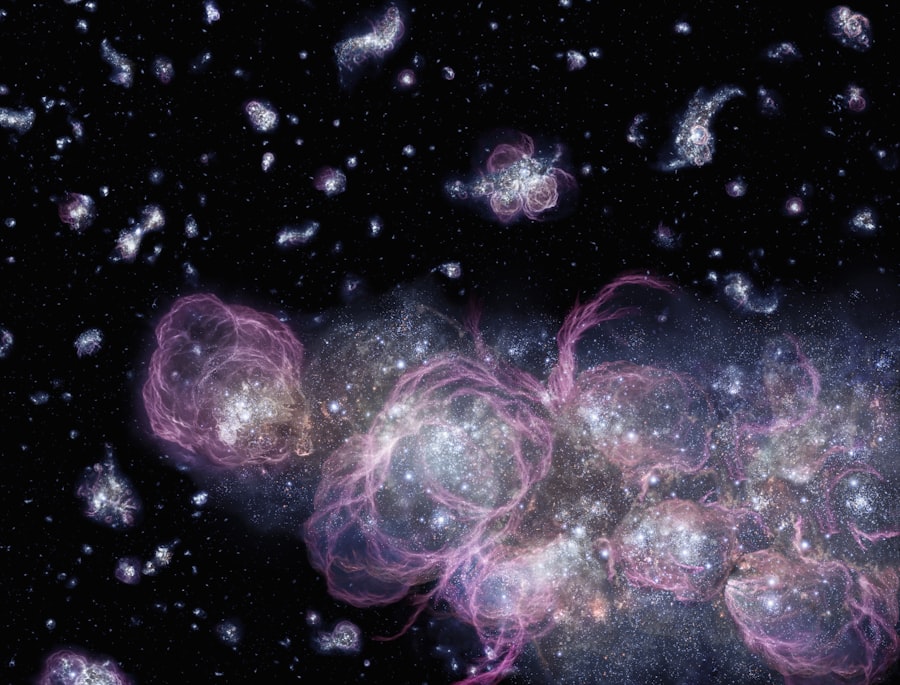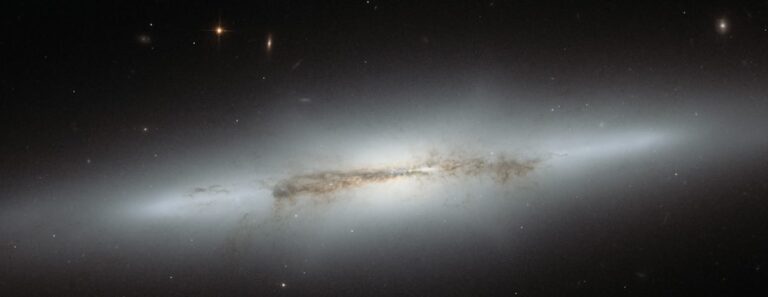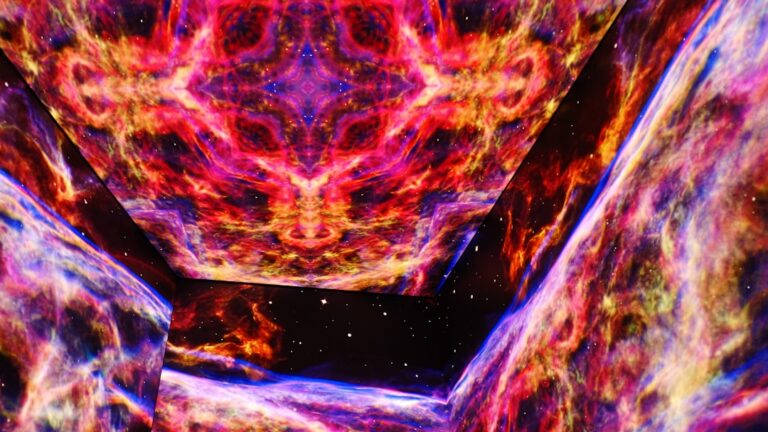Cosmic radiation is a form of high-energy radiation that originates from outer space and permeates the Earth’s atmosphere. This radiation is primarily composed of charged particles, such as protons and heavier nuclei, as well as gamma rays and other forms of electromagnetic radiation. The sources of cosmic radiation are diverse, including supernovae, active galactic nuclei, and even the sun, which contributes to the overall cosmic radiation environment.
As these particles travel through space, they can interact with the interstellar medium and magnetic fields, leading to a complex interplay of energies that ultimately reaches our planet. The study of cosmic radiation is not merely an academic pursuit; it has profound implications for various fields, including health, technology, and environmental science. Understanding cosmic radiation is crucial for assessing its effects on human health, particularly for those who spend extended periods in high-altitude environments or in space.
Furthermore, as technology continues to advance, the impact of cosmic radiation on electronic devices and systems becomes increasingly significant. This article delves into the multifaceted nature of cosmic radiation, exploring its effects on human health, technology, space exploration, and the environment while also discussing strategies for mitigating its risks.
Key Takeaways
- Cosmic radiation is made up of high-energy particles from outer space that can impact human health, technology, space exploration, and the environment.
- Exposure to cosmic radiation can increase the risk of cancer, cataracts, and other health issues for astronauts and airline crew members.
- Cosmic radiation can cause electronic malfunctions in technology, such as satellites and aircraft, leading to potential safety hazards and financial losses.
- Understanding cosmic radiation is crucial for the safety and success of space missions, as well as for the development of future space exploration technologies.
- Research on cosmic radiation is essential for developing effective mitigation strategies to protect humans, technology, and the environment from its harmful effects.
The Impact of Cosmic Radiation on Human Health
The health implications of cosmic radiation are a subject of ongoing research and concern, particularly for populations exposed to higher levels of this radiation. For instance, airline crew members and frequent flyers are subjected to elevated doses of cosmic radiation due to their altitude and the thinning atmosphere. Studies have shown that the effective dose of cosmic radiation at cruising altitudes can be significantly higher than at sea level, leading to increased risks of cancer and other health issues over time.
The International Commission on Radiological Protection (ICRP) has established guidelines to monitor and manage exposure levels for these individuals, emphasizing the need for awareness and precautionary measures. In addition to air travel, astronauts face even greater risks from cosmic radiation during space missions. The absence of Earth’s protective atmosphere and magnetic field exposes them to higher levels of ionizing radiation, which can damage DNA and increase the likelihood of developing cancer.
Research conducted on astronauts who have spent extended periods aboard the International Space Station (ISS) has revealed changes in their immune systems and potential long-term health effects. The National Aeronautics and Space Administration (NASA) has been actively studying these impacts to develop countermeasures that can protect astronauts during future missions to Mars and beyond.
Cosmic Radiation and its Effects on Technology

Cosmic radiation poses significant challenges to modern technology, particularly in the realm of electronics and satellite systems. High-energy particles can disrupt electronic circuits, leading to malfunctions or failures in critical systems. For example, satellites in low Earth orbit are constantly bombarded by cosmic rays, which can cause single-event upsets (SEUs) in their onboard computers.
These SEUs can result in data corruption or even complete system failures, necessitating robust design strategies to mitigate these risks. To combat the effects of cosmic radiation on technology, engineers employ various shielding techniques and error-correcting codes. Shielding materials such as aluminum or polyethylene are often used in satellite construction to absorb or deflect incoming radiation.
Additionally, redundancy in critical systems ensures that if one component fails due to cosmic radiation exposure, backup systems can take over seamlessly. The development of radiation-hardened components is also a key area of research, with manufacturers creating specialized chips designed to withstand the harsh conditions of space.
The Role of Cosmic Radiation in Space Exploration
| Topic | Metrics |
|---|---|
| Cosmic Radiation Exposure | Measured in millisieverts (mSv) per year |
| Radiation Shielding Effectiveness | Percentage reduction in radiation exposure |
| Health Risks | Increased risk of cancer and degenerative diseases |
| Spacecraft Design | Integration of radiation protection materials |
| Regulatory Limits | Maximum allowable radiation exposure for astronauts |
Cosmic radiation plays a pivotal role in shaping our understanding of the universe and advancing space exploration efforts. As scientists seek to explore deeper into space, understanding the nature and behavior of cosmic rays becomes essential for mission planning and astronaut safety. Cosmic rays provide valuable information about high-energy processes occurring in distant astrophysical phenomena, such as supernovae and black holes.
By studying these particles, researchers can gain insights into the fundamental workings of the universe. Moreover, cosmic radiation presents both challenges and opportunities for future missions beyond low Earth orbit. For instance, missions to Mars will require careful consideration of radiation exposure for astronauts during transit and while on the Martian surface.
The Martian atmosphere offers some protection against cosmic rays; however, it is significantly thinner than Earth’s atmosphere. As a result, mission planners must develop effective shielding strategies and medical protocols to ensure astronaut safety during extended stays on Mars. Understanding cosmic radiation’s role in space exploration not only informs safety measures but also enhances our knowledge of the cosmos.
Understanding the Effects of Cosmic Radiation on the Environment
The environmental impact of cosmic radiation is a complex topic that encompasses both terrestrial and extraterrestrial ecosystems.
For example, cosmic rays can induce mutations in living organisms by interacting with DNA molecules.
While some mutations may be harmful, others can lead to evolutionary adaptations that enhance survival in changing environments. In addition to terrestrial effects, cosmic radiation also plays a role in shaping planetary atmospheres throughout the solar system. For instance, studies have shown that cosmic rays can influence cloud formation by ionizing particles in the atmosphere.
This process may have implications for climate patterns and weather systems on Earth. Furthermore, understanding how cosmic radiation interacts with planetary atmospheres is crucial for assessing habitability on other celestial bodies. As scientists explore moons like Europa or exoplanets in distant star systems, knowledge of cosmic radiation’s effects will be vital for evaluating their potential for supporting life.
Mitigating the Risks of Cosmic Radiation Exposure

Mitigating the risks associated with cosmic radiation exposure requires a multifaceted approach that encompasses monitoring, shielding, and public awareness. For individuals who are frequently exposed to higher levels of cosmic radiation—such as airline crew members—regular monitoring of exposure levels is essential. Organizations like the Federal Aviation Administration (FAA) provide guidelines for tracking cumulative doses over time to ensure that workers remain within safe limits.
In terms of shielding strategies, advancements in materials science have led to the development of innovative solutions that can effectively reduce radiation exposure. For example, researchers are exploring the use of hydrogen-rich materials that can absorb high-energy particles more efficiently than traditional shielding materials. Additionally, space agencies are investigating the potential use of regolith (the loose material covering solid bedrock) from celestial bodies like the Moon or Mars as a natural shielding resource for future habitats.
Public awareness campaigns also play a crucial role in educating individuals about cosmic radiation risks and safety measures. By informing people about the sources and effects of cosmic radiation, communities can make informed decisions regarding travel and occupational safety. Furthermore, fostering a culture of safety within industries that involve exposure to cosmic radiation can lead to better practices and protocols that protect workers’ health.
Future Research and Exploration of Cosmic Radiation
The future of research into cosmic radiation is poised for significant advancements as technology evolves and our understanding deepens. Ongoing studies aim to unravel the complexities of cosmic ray origins and their interactions with various materials and biological systems.
This data will enhance our understanding of fundamental astrophysical processes while also informing safety measures for astronauts. Moreover, as humanity prepares for long-duration space missions—such as those planned for Mars—research into effective countermeasures against cosmic radiation will become increasingly critical. Scientists are exploring pharmacological interventions that could bolster astronauts’ resistance to radiation-induced damage at the cellular level.
Additionally, advancements in artificial intelligence and machine learning may enable more sophisticated modeling of cosmic ray interactions with biological tissues, leading to improved risk assessments. The exploration of cosmic radiation also extends beyond our solar system as astronomers seek to understand its role in galactic evolution and structure formation. Observations from ground-based observatories and space telescopes will continue to provide valuable insights into how cosmic rays influence star formation rates and galactic dynamics across vast distances.
The Importance of Studying Cosmic Radiation
The study of cosmic radiation is an essential endeavor that intersects multiple disciplines—from health sciences to engineering and environmental studies. As we continue to explore the cosmos and push the boundaries of human presence beyond Earth, understanding the implications of cosmic radiation becomes increasingly vital. The potential health risks for astronauts and airline crew members necessitate ongoing research into protective measures and monitoring strategies.
Furthermore, as technology becomes more integrated into our daily lives, addressing the challenges posed by cosmic radiation on electronic systems is crucial for ensuring reliability and safety in critical applications. The environmental impacts of cosmic rays also warrant attention as we seek to understand their role in shaping ecosystems both on Earth and beyond. In summary, studying cosmic radiation not only enhances our knowledge of fundamental astrophysical processes but also informs practical applications that safeguard human health and technological integrity in an increasingly interconnected world.
As research continues to evolve, it will undoubtedly yield new insights that deepen our understanding of this enigmatic aspect of our universe.
Cosmic radiation, a fascinating subject in the realm of astrophysics, plays a crucial role in our understanding of the universe. It consists of high-energy particles originating from outer space that constantly bombard the Earth. While cosmic radiation is primarily a topic of interest in the field of space science, its effects can also be observed in various ecological systems on Earth. For instance, the study of algae, which are sensitive to environmental changes, can provide insights into how cosmic radiation impacts biological organisms. To delve deeper into the ecological aspects of algae and their distribution, you can explore this related article: Exploring Algae: Ecology, Distribution, and Thallus Organization. This article offers a comprehensive overview of algae, highlighting their ecological significance and the factors influencing their growth and distribution.


















+ There are no comments
Add yours